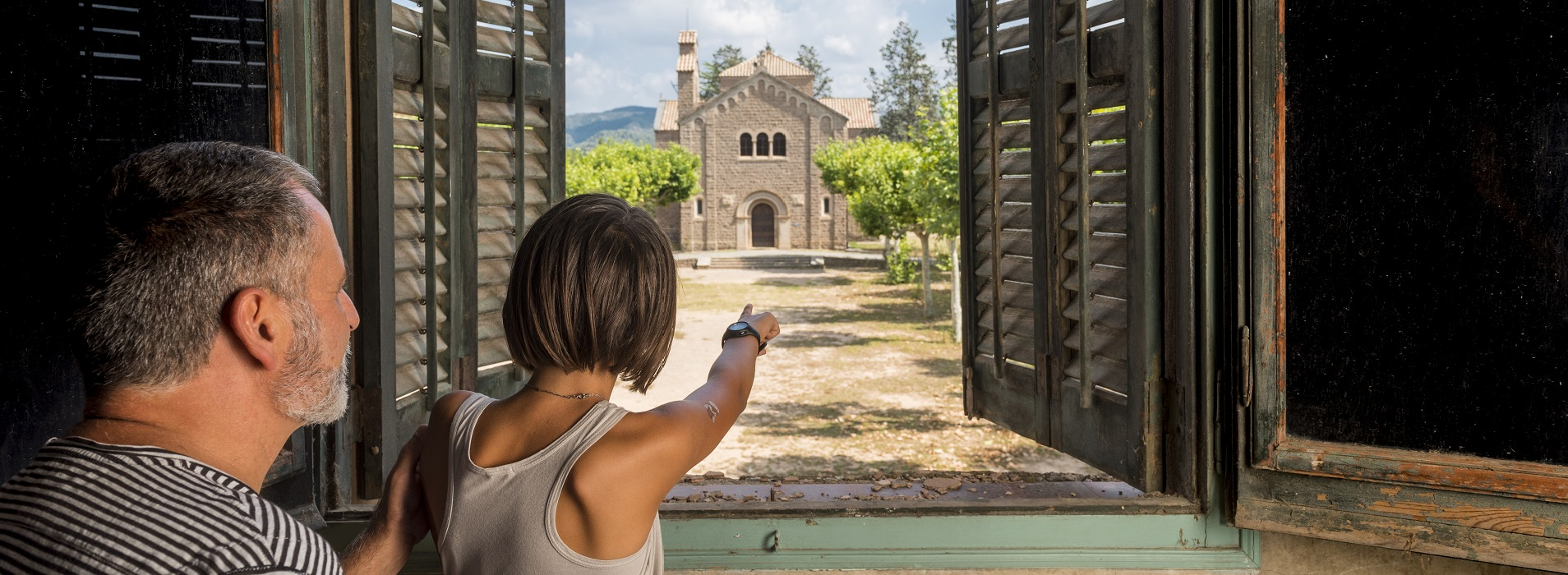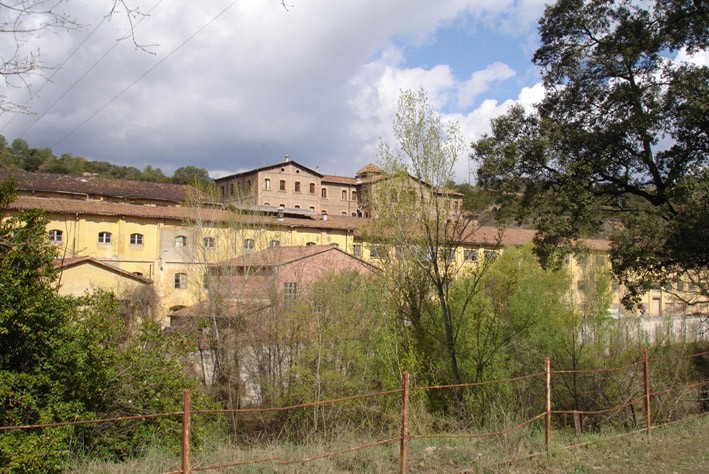

Cal Rosal
The space occupied by the Colonia Rosal is divided between the towns of Berga, Avià and Olvan. The colony is located between Gironella and Berga, 4 km south of the capital.
The history of the colony Rosal begins in 1858, when the Rosal brothers, -who had experience in the world of textiles-bought vacant land, near the river Llobregat, to set up a factory that exploited the river water as a source of energy.
On 25 May 1859 the Rosal presented the proposed construction of a dam, a water diversion channel and a factory Building, and, the following year the factory was running. In 1874 the factory was already fully consolidated and Rosal brothers requested a concession to use more water and thus increase production. This step involves building a new dam.
By obtaining more power, however, was not enough for factory work. We cannot forget the role of workers in the late nineteenth and early twentieth century were twelve working days (or more) hours per day, six days a week.
A hundred years ago, the reward for so much effort and sacrifice was not stipulated by any legal agreement or mandatory; was the owner who decides what it paid its workers: for example, in 1904, depending on age, sex and profession, Cal Rosal workers were paid between 7.5 and 21 pesetas a week.
The factory comprised sections of spinning, weaving, dyeing and finishing and got to work on it more than a thousand people. Cal Rosal was the Berguedà industrial colony with more workers. The growing importance of the factory led, in turn, the growth of the colony, first around the manufacturing area and then on the other side of the road to Berga. The colony, step by step, will be expanded and built several buildings and facilities: the church, the convent, the cinema, the theater, the train arrived in 1887, etc.
During the first third of the twentieth century the colony continues to grow demographically and productively, but the beginning of the Civil War in 1936 led to a series of sudden changes: the Rosal family was exiled, the factory was collectivized and the company renamed itself, by voting of the workers themselves, "Manufactures Bergolvan." With the entry of Franco's troops and the end of the war, the Rosal regain control of the factory and the colony and the company became known as "Textile Colonia Rosal."
After the tough postwar years, when the electricity restrictions forced to Rosal brothers use a vapor machine -, the company experienced the most productive stage of their history. Between 1950 and 1970 the factory employed 1,200 people there, most of who lived in the colony. In the seventies gradually took the staff and reducing the population of the colony, too.
The crisis in the textile was extreme during the eighties. Finally, the factory Cal Rosal closed doors in 1992, after an attempt to keep alive the production through the cooperative "Bergolvan." The end of production activities in Cal Rosal provoked a strong shock to the region; was the definitive evidence that the textile industry, one of the two traditional pillars, along with mining, of the county economy, collapsed.
- Town: Berga
- Post code: 08600
OFICINA DE TURISME DEL BERGUEDÀ
Carretera C16 Km 96
08600-Berga. Phone (+34) 654 125 696
Monday to Friday: 9 to 14h.
Saturday: 10 to 14 & 16 to 18h.
Sunday and holidays: 10 to 14h.
E-mail: turisme@elbergueda.cat
[Premsa]
Other

 English
English Follow us
Follow us







![[Tancar]](/plantilles/bergueda/img/tancar.png)

















